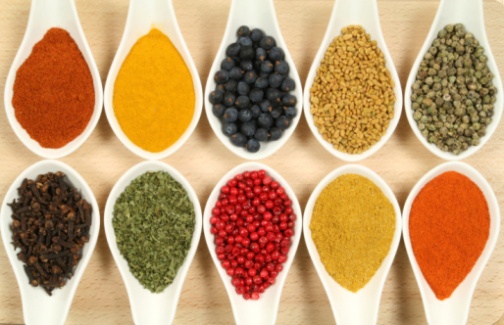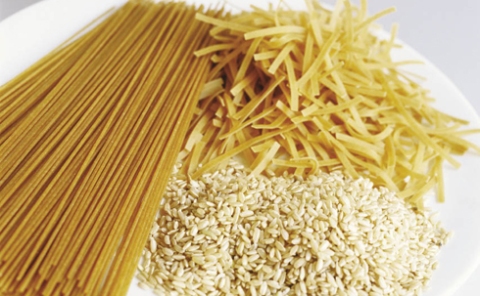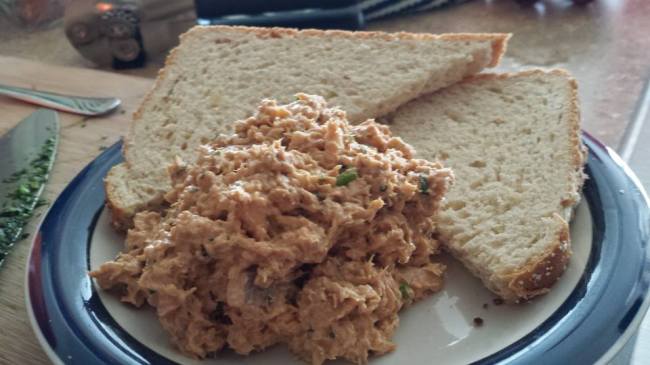Hello again and welcome to my first official blog post! Before I dive into all my favorite things to make at college, I want to share a couple versatile ingredients that I like to keep around the kitchen. Having these ingredients around will save you many needless trips to the local supermarket in the future so listen closely!

Photo Credits: Maris Callahan
FLOUR
You’ve probably seen this white powdery stuff lying around in your grandma’s kitchen, and it should be something you keep in your college apartment as well. Flour is an extremely versatile ingredient that has many purposes. Aside from being the main ingredient in breads and cakes, it can be used as a natural thickener. Just throw a tablespoon or two of flour into a pot of watered down soup and it will thicken up quite nicely (Don’t forget to add salt!). Surprisingly, flour has many uses outside of cooking. Some of which include making modeling clay, dry shampoo and even putting out grease fires! I usually make sure to keep a 5 pound bag in my pantry. Just be careful to store it in a cool dry place.

Photo Credits: ABC News
SUGAR
Sugar makes the world go round. It’s an ingredient used in almost every recipe, and yes, not just sweets. There are many forms of sugar that fall under three main categories: White, brown, and liquid. The types of sugar I usually keep in my pantry are the standard white granulated sugar and brown sugar. If you like making cakes that require icing, then you should keep some confectioners/powdered sugar at hand.

Photo Credits: Rumormillnews.com
SPICES
This is a pretty large category since there are so many different types of spices out there in the world. Although it would be ideal to have as many different spices as you can in your spice cabinet, it’s pretty hard to do considering that most of you guys are broke college students. Aside from salt and pepper, which you should always have somewhere around your kitchen, a few versatile spices I like to keep at hand are cayenne pepper, garlic powder, oregano, dried basil, paprika, cinnamon, nutmeg, thyme, parsley, onion powder, Chile powder, and red pepper flakes. This is a pretty large list, but I assure you, having these spices around will open many possibilities for the types of recipes you can make.

Photo Credits: Denise Shoukas
DRIED PASTA AND RICE
I can’t tell you how many times this stuff saved me from starving after not going grocery shopping for a couple weeks. Not only are these dried carbs filling and nutritious, they are relatively cheap and last forever (if you are careful to store the stuff in a dry place). You can go ahead and cook up some plain pasta or rice, or you can make a delicious meal by adding a couple more extra ingredients. I’ll show you some of my favorite pasta and rice dishes in my future blogs so make sure to stay tuned!

Photo Credits: Clayton South
VEGETABLES
Fresh or frozen, vegetables are a major element in many different recipes. You can go to the local supermarket and pick out some fresh veggies to cook with or simply munch on for a healthy snack. Potatoes, onions, green onions, carrots, and celery are usually sitting around my kitchen somewhere. In the freezer, I keep a bag of frozen vegetables (usually consists of peas, carrots, and corn) at hand whenever I need to make something like soup or fried rice.

Photo Credits: Buckleyfarm.com
MEAT
Of course, you can never forget the meat (unless you’re a vegetarian). Ground beef and chicken (Ground or breast form) are the types of meat I usually keep at hand since most recipes require, or can be used as a substitute for another meat, chicken or beef (maybe even both). There are many different fat levels of ground beef. The more lean the beef is, the healthier and more expensive it is. Personally, I like buying 80 percent lean and 20 percent fat since it seems to be the most reasonably priced (per pound) and it’s not terribly unhealthy. As for chicken, there are not many options for ground, but when I buy chicken breasts, I usually go for the prefrozen variety since it’s cheaper and the difference in quality from fresh chicken is not very noticeable. Whenever you buy meat and you know you are not going to use it for a while, simply put it in the freezer. Just remember to place it back in the fridge a day before use so it has time to thaw.

Photo Credits: Vikas Khanna
FRESH HERBS
Like spices, there are a large variety of fresh herbs available. I don’t really buy fresh herbs since the dried spices I have are usually sufficient. I do, however, always have fresh cilantro. The dried stuff just doesn’t cut it. The taste and aroma of fresh cilantro is simply irreplaceable. Whenever you get the chance, just swing by your local grocery store and pick up a bunch of fresh cilantro! Hopefully you’ll appreciate the taste as much as I do.

Photo Credits: Joshua Bousel
OTHER STUFF
Other things you can have in your kitchen are some premade sauces and condiments. There is one condiment in particular that I just can’t get enough of. It’s a bright red sauce in that iconic clear bottle with a pointy green cap. You guessed it, Sriracha! It’s a spicy, garlicy chili sauce that compliments many dishes ranging from pizza to sushi. Not only is it a great compliment to many dishes, it can be used directly in many recipes to add some extra heat and flavor.
Having all these ingredients at hand will make cooking in your college apartment much less of a hassle. Also, don’t be afraid to buy the off brand stuff. It’s not just cheaper. Most off brand products are indistinguishable from the name brand stuff so go ahead and choose that off brand box of pasta. You will end up saving a hefty sum of money once you get the hang of shopping efficiently.


























